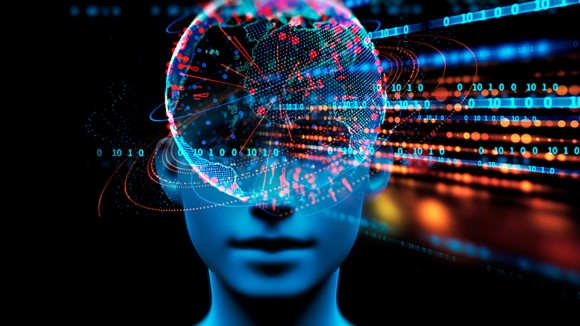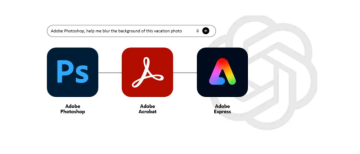Google and Stanford's researchers recently developed a new kind of reality show featuring AI agents rather than people.
They created 25 AI characters with backstories, personalities, memories, and motivations using custom code and OpenAI's viral chatbot ChatGPT. Then, at that point, the scientists dropped these characters into a 16-bit computer game town and allow them to move on.

So, when computers become real, what happens?
In a preprint paper outlining the project that was posted to arXiv, the researchers wrote, "Generative agents wake up, cook breakfast, and head to work." Craftsmen paint, while writers compose; they structure conclusions, and notice one another, and start discussions; they recollect and consider days past as they plan the following day."
It's not exactly riveting television, but for what amounts to a huge machine-learning algorithm talking to itself, it seems surprisingly real.
Smallville, an AI town, is just the latest development in a fascinating AI era. A number of offshoot projects are combining ChatGPT with other programs to automatically complete a cascade of tasks, whereas the basic version of ChatGPT takes interactions one at a time writes a prompt and receives a response. These might include making a to-do list and checking off each item as it is completed, searching the internet for information and writing a summary of the results, writing code and fixing bugs, or even reviewing and fixing ChatGPT's own output.
These sorts of flowing associations make Smallville work as well. Simple AI agents that are able to store memories and then reflect, plan, and act based on those memories are powered by a series of companion algorithms developed by researchers.

The first step is the creation of the character. In order to accomplish this, the researchers create a detailed prompt that serves as a foundational memory of that character's personality, motivations, and situation. An abbreviated example from the paper is as follows: John Lin is an enthusiastic pharmacy shopkeeper at Willow Market and Pharmacy. He is always looking for ways to make it easier for his customers to get medication; John Lin is living with his better half, Mei Lin, who is a school teacher, and child, Vortex Lin, who is an understudy concentrating on music hypothesis."
However, characterization is insufficient. Memory is also needed for each character. As a result, the team developed a database known as the "memory stream" that stores the experiences of an agent in everyday language.
An agent displays the most recent, significant, and pertinent memories upon accessing the memory stream. The events that have the greatest "importance" are recorded as distinct memories, which researchers refer to as "reflections." Last but not least, the agent comes up with plans by using a series of more and more specific prompts to break down the day into smaller and smaller chunks of time. As a result, each big plan is broken down into smaller steps. For retrieval, these plans are also added to the memory stream.
As the specialist approaches its day making an interpretation of text prompts into activities and discussions with different characters in the game it taps its memory stream of encounters, reflections, and plans to illuminate each activity and discussion. In the meantime, new experiences return to the stream. The interaction is genuinely straightforward, yet when joined with OpenAI's enormous language models via the ChatGPT interface, the result is shockingly complicated, even rising.

In a test, the group provoked a person, Isabella, to design a Valentine's Day party and another, Maria, to have eyes for a third, Klaus. After that, Isabella decorated the cafe, invited friends and customers, and got Maria, her friend, to help. Klaus is invited to go with Maria after Maria tells him about the party. The party is attended by five agents, all of whom are human. Several of them lie or simply do not show up.
The rest just outgrew the underlying seeds of the party plan and the pulverization.
It is amazing that this can be done almost entirely by dividing ChatGPT into a number of different functional parts and personalities and playing them off of one another.
When combined with high-fidelity avatars, video games are the most obvious application of this kind of believable, open-ended interaction. Non-player characters could develop into conversations with convincing personalities from scripted interactions.
The scientists caution individuals might be enticed to frame associations with practical characters a pattern that is now here and originators ought to take care to add content guardrails and consistently repudiate when a person is a specialist. The dissemination of false information and excessive reliance on agents are two additional risks that are applicable to generative AI as a whole.

Although this method may not yet be practical enough to work in mainstream video games, it does suggest that this will likely happen soon.
The equivalent is valid for the bigger pattern in specialists. Despite the hype, current implementations are still limited. However, the creation of capable, assistant-like agents capable of completing multistep tasks at a prompt may be made possible by connecting multiple algorithms with internet access, plugins, and other necessary components. Longer term, such mechanized man-made intelligence could be very helpful yet in addition represent the gamble of skewed calculations creating unexpected issues at scale.
For the time being, the most obvious aspect is how the feedback loop between generative AI and a community of developers and researchers continues to reveal surprising new directions and capabilities.
© Copyright 2023. All Rights Reserved Powered by Vygr Media.






















